
A closer look at the block
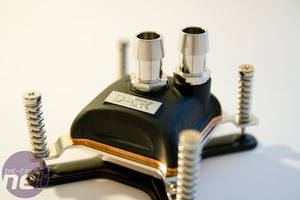
If you're familiar with my previous works on watercooling here at bit-tech, then you know that I'm a stickler for a good block design. Waterblocks follow a very intricate but predictable series of physics and chemistry laws, and so it's interesting to see how those are put into practice with well-made blocks.
The FuZion v.2.0 is actually, much to my surprise, not a whole heck of a lot different than its v1.0 older brother. So much so in fact, that after I had taken it apart, I could honestly barely tell the difference – at least in the baseplate.
Upon closer review, I started to understand why – the design of the interior really hasn't moved much from its predecessor – it's just been, for lack of a better word, tweaked. The block base is sculpted differently on the edges, but the meat of it still features the same pins, same layout, and same waterflow. The copper base is pretty much functionally identical to the original.
Now, for many of you, I think this will be a disappointment. For me, it was something of a blessing. First, this design worked, and worked well. Second, this isn't a new block – it's v.2.0, a revision of a previous model. The baseplate wasn't broken, it didn't need to be fixed.
Really, what has changed is the block's outer styling and flow path. The top of the FuZion 2.0 is entirely different, even though it's still made out of the same old Delryn material as the last one. Some of you may like that look – I'm not too crazy about it, though I do like the restyling a lot more than the original. The change helps direct the water flow a little more than the previous version, which means we shouldn't see much in a temperature difference but we should in a multi-block layout where the streamlined flow will help.
Outside of the new top, the main thing that's changed is the retention mechanism. It now bolts in around the bottom where the block is sealed, and an allen key allows you to switch between the easy LGA-775 and the universal mechanism. While you're switching plates, you can snap it open and take a look at the very neat and clean insides.
I wanted to make one additional note regarding the block's machining quality. You can see in the above pictures how very nicely this base arrived at my doorstep – polished enough to give a bit of a mirror finish. It wasn't the most perfect lapping job I've ever seen, but it also is a very good job and should mean there's no reason to fiddle with it yourself. Again, it's those little details like this that really show off the quality that D-Tek puts into its blocks.

MSI MPG Velox 100R Chassis Review
October 14 2021 | 15:04

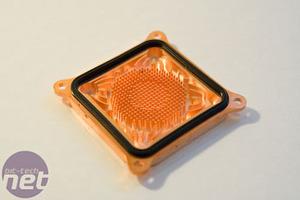
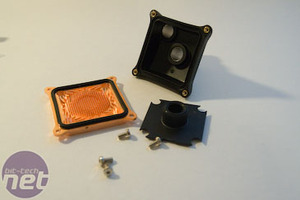
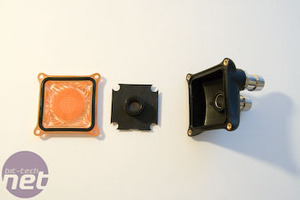
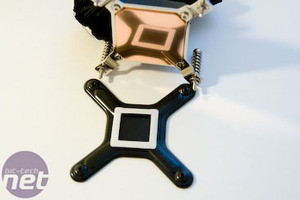







Want to comment? Please log in.